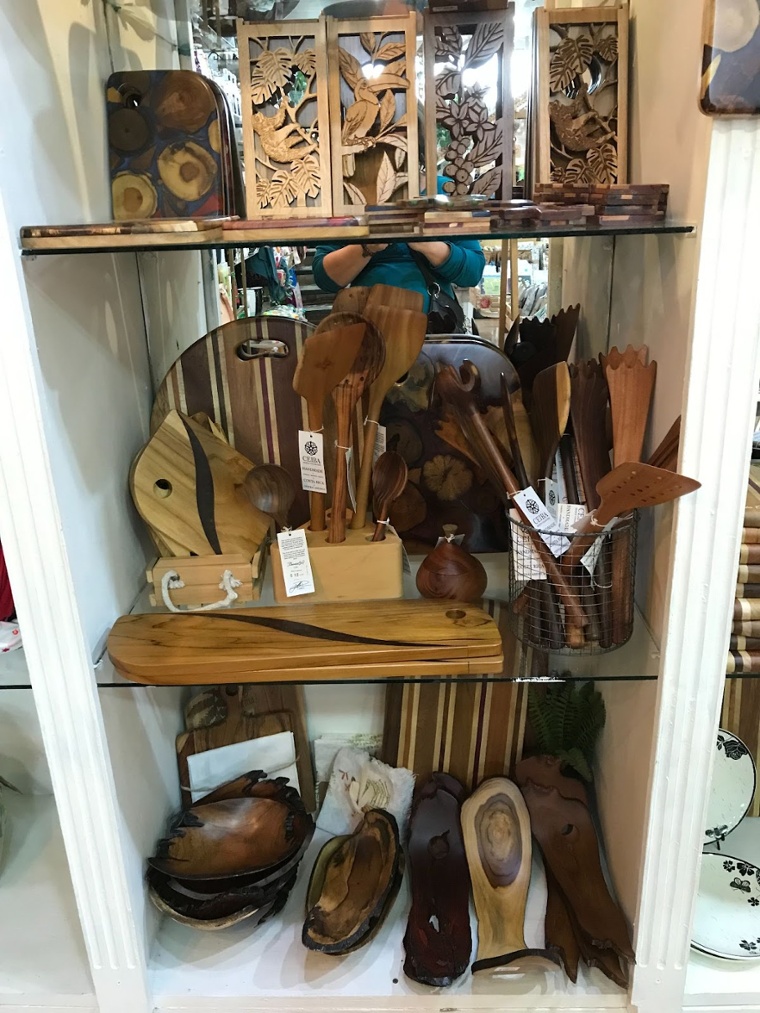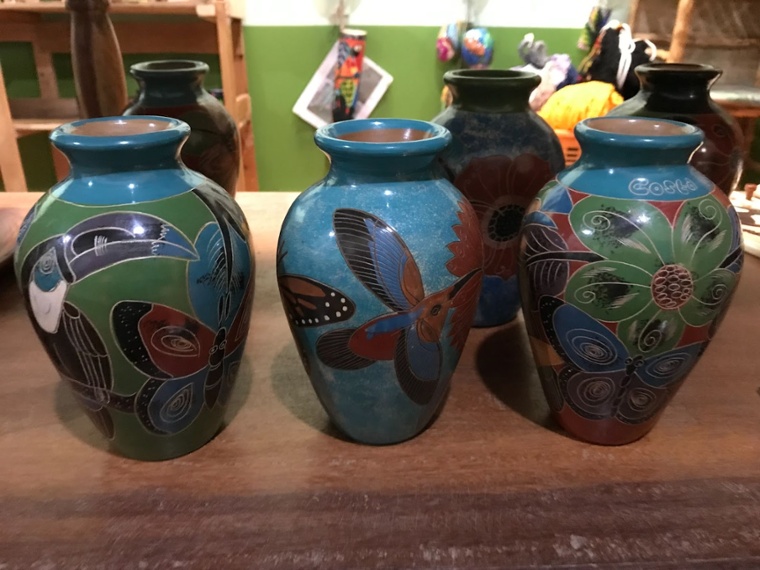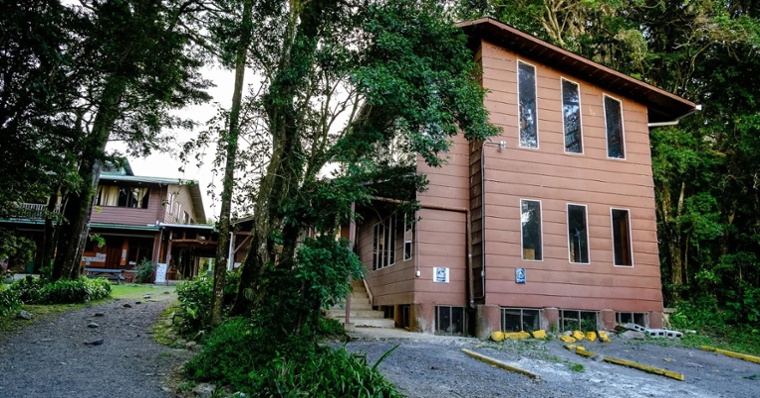An Artisan's Paradise - Part 2 | Costa Rican Art

Welcome back! If you’ve already read Part 1 of this post, you’ll know, I’m utterly fascinated with the beautiful crafts and artwork that can be found here in Costa Rica. Many of the indigenous tribes are using skills, which have been passed down from generation to generation, to maintain important parts of their culture and to support their traditional way of life.
This means continuing to create these pieces using traditional methods, and that is a lot of work. What modern artisans can do in a matter of hours using power tools and molds and other modern techniques still take days and sometimes weeks for the artisans here. The finished products however are absolutely gorgeous, and a conscious preservation of culture, and so it’s worth the wait!
For a quick peek at the many indigenous arts available right in Monteverde, you can explore the Casem Co-Op. The Casem Co-Op was created in 1982 by a group of 8 women who wanted to improve their economic conditions and way of life. Today it’s a thriving collective that is helping local artisans (and others) support their community, and make it better through the sale of arts and crafts.
In the previous post, Costa Rica-An Artisan´s Paradise Part 1, we talked about the Boruca masks, crafts using the jicaro fruit, Chorotega pottery and paintings by the Maleku tribe. In this post we are going to explore traditional wood carvings, furniture and jewelry making, the colorfully painted carretas, and fiber art which includes everything from woven/embroidered fabrics to macrame and hammocks.
Since Costa Rica is famous the world over for their colourful oxcarts, I’ll start there!
Wooden Oxcarts (Carretas)
The oxcart was brought to Costa Rica by the Spanish settlers centuries ago to help carry goods (like coffee and sugar cane) from the plantations near Sarchi to the coast, where ships would carry the precious cargo back to Spain.
The type of wheels used by the Spanish weren’t up to the task of hauling heavy cargo up and down the rough mountain terrain, so the Costa Ricans made an important structural change to the wheels based on an Aztec design. Since then, solid wood wheels wrapped with metal straps have become the norm, although back then the carts were plain unpainted wood.
The story goes that in 1902, a local builder named Joaquin Chaverri decided to paint his cart so that it would look nice when he took his family out. He used the only paint he had, which was orange(traditional paint is powdered pigment and linseed oil). His neighbours were impressed by his idea and followed suit, and the tradition of painted carts began.
To this day, most of the carreta are orange and red. The brightly coloured designs and curlicues are based on plants and flowers that are grown in the area. And as the idea caught on, the carts became fancier, and fancier. Families developed their own unique designs, and contests were held to choose the most beautiful carts. It’s a tradition that continues to this day.
*Fun Fact! In 2005 Costa Rica’s Carettas were declared an Intangible World Cultural Heritage by UNESCO. These beautiful pieces of practical art have since been adopted as the National Labor Symbol.
The largest brightly painted Oxcart in the World at Sarchi, Costa Rica
Wood Working
The most famous area in Costa Rica when it comes to woodworking is Sarchi. Not only do they make the traditional oxcarts, but they also make handmade furniture that is to die for! Woods that would cost a fortune elsewhere in the world are readily available here. The warm wet climate also means that trees can grow quickly, so with proper planting and the right care, the trees can be harvested without the deforestation which plagues so many other countries.
Beautiful handmade furniture and cabinets are common here, stained the traditional dark, rich brown, and often handcarved with beautiful designs.
Hand Carving isn’t only reserved for furniture though! Artisans create everything from wooden bowls and coffee frames, to fanciful sea creatures, flora and fauna. It’s not uncommon as well to see tree trunks carved into hands for chairs, or driftwood pieces carved with iguanas. Then, of course, there are the carved Boruca masks that I mentioned in Part 1.
Some of the carvings are left their natural colours, some are stained, and some brightly painted, depending on the craftsman, but they’re all unique and personal! This is the only place I have ever been where you can find a truck parked on the side of the road full of handmade wooden chairs and stools. Take a drive through Sarchi, and it’s not uncommon to find a man under an umbrella with a sign, selling his wares.
Jewelry
Unlike the Boruca masks and the Chorotega Pottery, jewelry making isn’t the specialty of any particular tribe. It’s simply everywhere, and the wide array of styles is mind-boggling. (my mind has boggled a lot since I moved here- have you noticed?)
You can find traditional metalwork jewelry worked in silver and gold with precious and semi precious stones, but you can also find jewelry made of wood, jicara, bamboo, leaves and reeds, shells, leather and cord, macrame… and the list goes on.
Last week I went to a store that had some strange looking pieces. At first I thought they were slices of agate since they were bright jewel colors, but when I asked, I found out that there were slices of banana, dyed bright colors and dipped in resin. There were banana rings and bracelets and even necklaces. Talk about ingenuity!
In many cases, indigenous tribes create wide collars out of woven fabric that are heavily embroidered and sewn with beads and shells. In some cases, these wide collars are created using a variety of knots and the beads, shells, and seeds are strung between the knots.
The simplest jewelry is made with waxed cord, knotted around a semi-precious stone or a shell, or woven with brightly dyed threads like friendship bracelets back home.
Metalwork Jewelry
Finding some of these amazing artists can take a little extra work, because they seldom have time to maintain a website. On the upside, that gives you a great excuse to go exploring… and when you find them, you’ll have access to some utterly unique creations made with heart and soul in every piece.
I did manage to find a few metalsmiths that I can share with you.
Daniel Icaza does some amazing work in many different mediums from metal to paint.
He does have a website, so you can peruse some of his work there. Here is an example of one of his belts, the buckle is gorgeous, but also take a look at the leatherwork, all I can say is wow.
I couldn’t resist putting up a picture of one of his rings as well… look at all the detail!
The next metalwork artist that I found is J. Esteban Monserrat. Here is a peek at some of his work. He also works in semi-precious stones and his work has lots of spiritual significance.
Estevan Del Monserrat snake ring
Esteban uses beautifully poetic descriptions of the stones, their origins and their properties when showing his pieces. The link above is to his Instagram page.
Fabric Art
This leads me naturally into another common type of craftsmanship, fabric art. It’s a title that can cover a pretty wide array of items, like hand-woven fabrics, embroidery, macrame and even hammocks. Spend some time on a beach anywhere in Costa Rica and eventually an artisan will wander by carrying colorful handmade hammocks over his shoulder to sell.
I’m just guessing, but it seems a natural progression for people who tie their own fishing nets to use the skill for hammocks which can be hung between any two trees and used for siesta.
Modern hammock makers dye the cords with bright colours and weave them into intricate patterns with hanging fringe or scallops around the outside edges.
You can also find hammocks made with hand-woven fabric. Simple “back strap” looms are used by indigenous women to make fabric for everyday clothing as well as traditional costumes, blankets and bags. You can find many of these souvenir shops around the country. The looms wrap around the waist on one end and are tied to a tree on the other end, the fabric produced isn’t very wide so large items must be made in strips and sewn together.
When it comes to woven fabrics, stripes seem to be the favourite pattern, but many of the designs are passed down verbally from generation to generation. In the Boruca Tribe, 2nd grade students begin learning how to gather the cotton, and spin it into yarn. As they progress they will learn how to dye and weave the yarn into fabric. I’m not even going to go into the painstaking processes used to create the dyes they use, but if you’re curious you can click this link.
Traditional costumes with wide skirts called golas, are often embroidered with bright coloured flowers, and vines to be worn during folk dances and at festivals. You can also see examples of this embroidery on the fancy costumes of the sabaneros (Costa Rican Cowboys).
While not exactly a ‘fabric art’, leatherwork is also quite common here. Not surprising in a place where cowboy culture is still a part of day-to-day life. Everything from intricately detailed saddles, to bags, wallets and purses can also be found.
If this isn’t enough yummy stuff to get you excited, click this link for some tips about where to find more handmade crafts in San Jose.
Hand-Made Chocolate
I know, I know, technically making chocolate isn’t a craft… and I did a whole post on chocolate already… however! While researching the indigenous tribes for this post, I found out a fun fact about the BriBri tribe that I wanted to share.
The BriBri live in the rainforests that border Panama. The tribe believes that the cocoa tree, (which they call Tsuru) contains the spirit of a woman with that name. They believe their god Sibö turned her into the tree as a thank you for the food and shelter that she provided. Now she can continue to provide food for her tribe forever.
(Somedays I feel like I’m made of chocolate… mostly because of the theory that you are what you eat… but this works too.)
Because of this belief, women enjoy a higher status in BriBri society than men. Only the women of the tribe are allowed to work with the cacao and make the chocolate, and they are also the only ones allowed to inherit the land. A true dedication to the cacao as a lifestyle!
Artisan’s Paradise
The simple fact that you can fill two full blog posts writing about Costa Rican artisans, is why I believe that Costa Rica really is an artisan’s paradise. You can literally travel the country learning time-honored skills from expert craftworkers. There are so many amazing ways that the indigenous tribes add beauty to the world… and to be fair there are also many thriving artisan communities throughout all of Costa Rica, and among expats as well!
And it’s the love from the greater Tico population, as well as the love from expats and visitors, that provides the drive and energy to support traditional artists. Artisan Collectives are popping up all over the country, drawing attention to the traditional forms of art, as well as bringing new and exciting forms of art into the country.
I could actually do an entire post on that as well… if you are interested, be sure to leave a comment below! Pura Vida!




